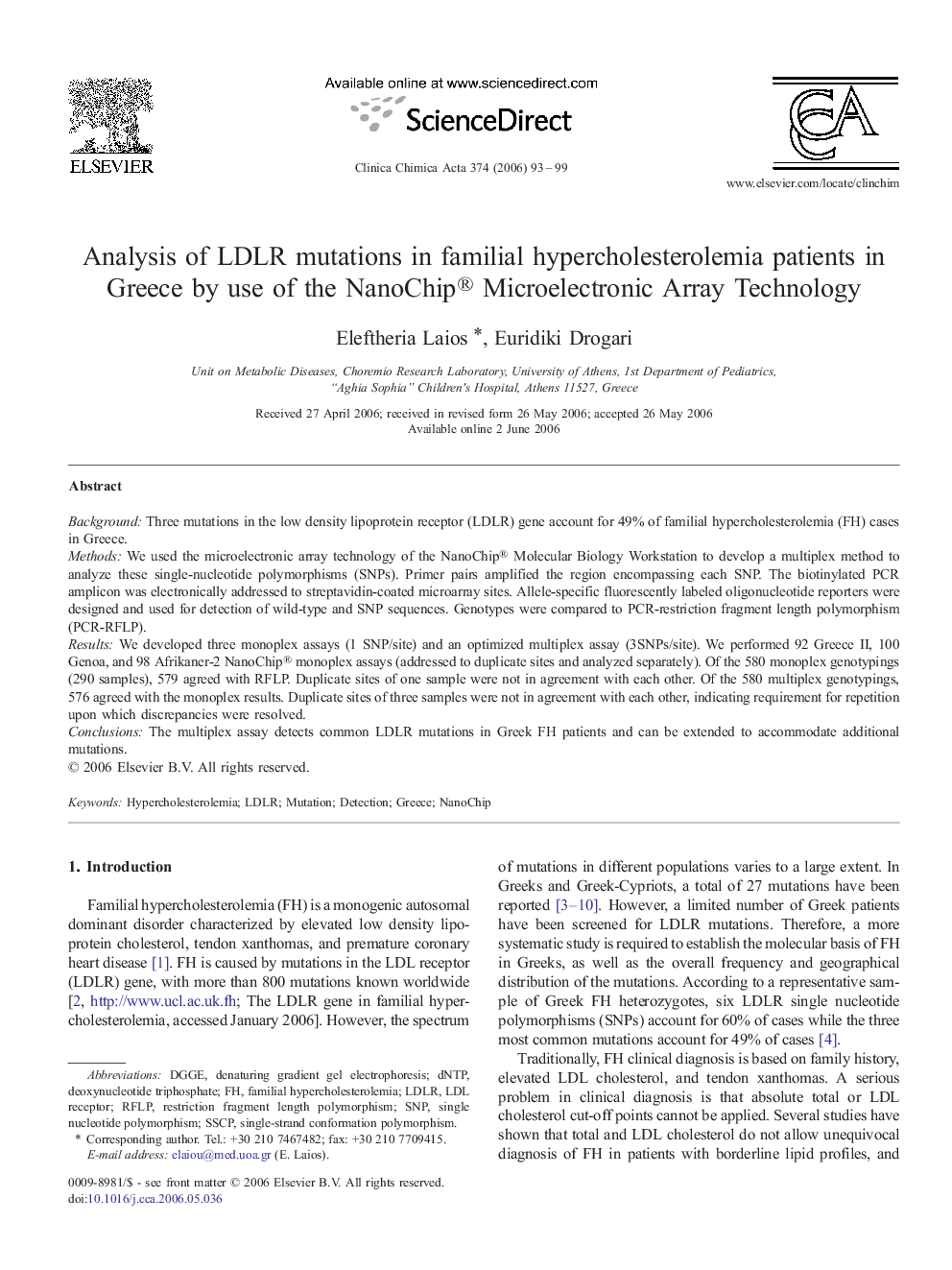| Article ID | Journal | Published Year | Pages | File Type |
|---|---|---|---|---|
| 1967944 | Clinica Chimica Acta | 2006 | 7 Pages |
BackgroundThree mutations in the low density lipoprotein receptor (LDLR) gene account for 49% of familial hypercholesterolemia (FH) cases in Greece.MethodsWe used the microelectronic array technology of the NanoChip® Molecular Biology Workstation to develop a multiplex method to analyze these single-nucleotide polymorphisms (SNPs). Primer pairs amplified the region encompassing each SNP. The biotinylated PCR amplicon was electronically addressed to streptavidin-coated microarray sites. Allele-specific fluorescently labeled oligonucleotide reporters were designed and used for detection of wild-type and SNP sequences. Genotypes were compared to PCR-restriction fragment length polymorphism (PCR-RFLP).ResultsWe developed three monoplex assays (1 SNP/site) and an optimized multiplex assay (3SNPs/site). We performed 92 Greece II, 100 Genoa, and 98 Afrikaner-2 NanoChip® monoplex assays (addressed to duplicate sites and analyzed separately). Of the 580 monoplex genotypings (290 samples), 579 agreed with RFLP. Duplicate sites of one sample were not in agreement with each other. Of the 580 multiplex genotypings, 576 agreed with the monoplex results. Duplicate sites of three samples were not in agreement with each other, indicating requirement for repetition upon which discrepancies were resolved.ConclusionsThe multiplex assay detects common LDLR mutations in Greek FH patients and can be extended to accommodate additional mutations.
